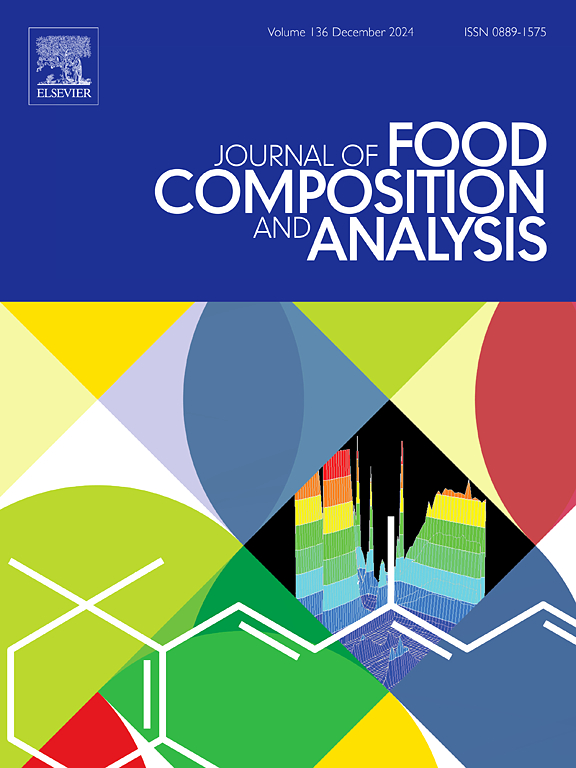Uncovering the formation of black tea cream: Focusing on the self-assembly process of infusion nanoparticles with different brewing times
IF 4
2区 农林科学
Q2 CHEMISTRY, APPLIED
引用次数: 0
Abstract
Focusing on the self-assembly process of black tea infusion nanoparticles helps elucidate the formation mechanism of tea cream. Brewing times ranging from 1 to 10 min were systematically assessed in this study, and the release pattern of the major components of the tea infusion was followed and related to the dynamic changes of the components of the black tea cream. The mean particle size of nanoparticles in the black tea infusion gradually increased with increasing brewing time, reaching a maximum (269.84 ± 11.25 nm) at 300 s. The results showed that soluble sugars were the most abundant substances of the tea cream at 60 s, and the proportion changed very little during the process. Proteins and flavonoids were rapidly incorporated into the tea cream, maintaining a concentration trend in accordance with the tea infusion. The percentages of caffeine, theobromine, gallic acid, and catechins in tea cream showed a sudden decrease at 240 s, followed by a gradual increase. This formation of tea cream is pH-dependent, with aggregation and precipitation at pH 0–7 and increased dissociation at pH 7–11. The findings will facilitate a more profound comprehension of the formation mechanism of black tea cream.
求助全文
约1分钟内获得全文
求助全文
来源期刊

Journal of Food Composition and Analysis
工程技术-食品科技
CiteScore
6.20
自引率
11.60%
发文量
601
审稿时长
53 days
期刊介绍:
The Journal of Food Composition and Analysis publishes manuscripts on scientific aspects of data on the chemical composition of human foods, with particular emphasis on actual data on composition of foods; analytical methods; studies on the manipulation, storage, distribution and use of food composition data; and studies on the statistics, use and distribution of such data and data systems. The Journal''s basis is nutrient composition, with increasing emphasis on bioactive non-nutrient and anti-nutrient components. Papers must provide sufficient description of the food samples, analytical methods, quality control procedures and statistical treatments of the data to permit the end users of the food composition data to evaluate the appropriateness of such data in their projects.
The Journal does not publish papers on: microbiological compounds; sensory quality; aromatics/volatiles in food and wine; essential oils; organoleptic characteristics of food; physical properties; or clinical papers and pharmacology-related papers.
 求助内容:
求助内容: 应助结果提醒方式:
应助结果提醒方式:


